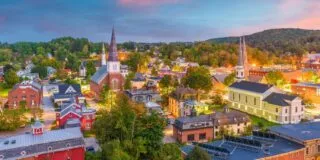Officially nicknamed “The Lone Star State,” Texas was the 28th state to join the United States of America on December 29, 1845.
It has a population of 28,995,881 (as of 2019), making it the 2nd most populous state.
Texas is bordered by the states of Louisiana, Arkansas, Oklahoma, and New Mexico.
With a total of 268,596 square miles (695,662 square kilometers) of land and water, it is the 2nd largest state.
The Texas capital is Austin, located southeast of the state’s center.
That’s enough fast facts about The Long Star State; here we’ll look at 15 facts about Texas that you probably didn’t know.
Texas has been inhabited for more than 12,000 years.

The most commonly held theory on how North America was populated claims that the first settlers, known as the Paleo-Indians, arrived sometime between 15-13,000 BC.
They came into the continent from the far east of modern-day Russia via the Bering Strait into what is now Alaska.
The Paleo-Indians were hunter-gatherers, slowly spreading throughout the Americas while seeking better hunting grounds.
Some of the first evidence of human activity in modern-day Texas dates back at least 12,000 years ago.
The only traces of these early nomads are broken stone spear tips and other crude tools.
There were at least six cultural groups in Texas when Europeans first arrived.
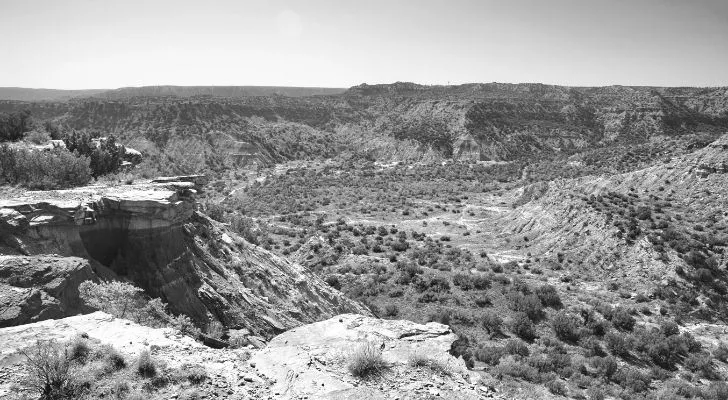
We say “cultural groups” because, in some cases, a group such as the Apachean tribes was not one unified nation but several tribes who shared a background, culture, history, language, and customs.
They were spread out throughout the modern state of Texas, with the Puebloan tribes to the southwest, with the Apachean tribes just to the north.
The Comanche tribes mostly lived closer to Texas’ Panhandle region, while the Caddoan tribes lived by the northeastern border of modern-day Texas along the Red River.
Finally, along the coast lived various Atakapa tribes.
Different tribes came and went over the early centuries of European settlement in North America.
In the end, any tribes which didn’t assimilate into the European culture were eventually pushed away to reservations.
The only officially recognized tribes in Texas today include the Kickapoo, the Alabama-Coushatta, and the Ysleta Del Sur Pueblo.
The first Europeans to reach Texas were from Spain.
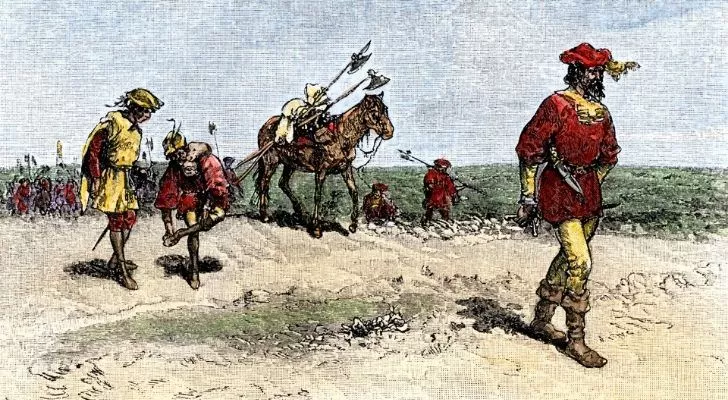
The first Spanish explorers to get within sight of modern-day Texas was the conquistador and cartographer Alonso Álvarez de Pineda, who passed by the Gulf of Mexico and created the first European maps of Texas’ coastline in 1520.
From this point, Spain claimed the region as a part of their colony – New Spain.
It’s unknown whether he actually made landfall or just anchored offshore.
Shortly after, in 1528, eighty survivors of a failed Spanish expedition found themselves washed up on the shores of Texas.
In the end, only four survived, including the famed Álvar Núñez Cabeza de Vaca, who explored much of the modern-day state before finding his way to the west coast of Mexico, where Spain had some settlements.
Unfortunately, de Vaca didn’t have any mapping tools, so he couldn’t map out the regions he explored!
The first Europeans to settle in Texas were French, who did it accidentally!
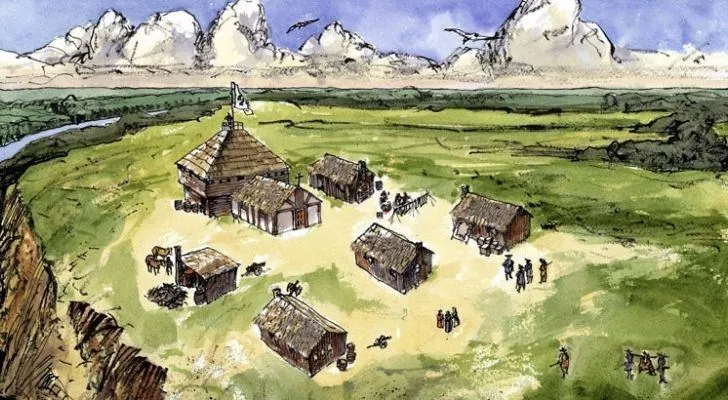
Busy with conquering and colonizing modern-day Mexico, Spain left the Texas region more or less alone for the next 160 years.
In 1684 a French colonization expedition left France to establish a colony near the Mississippi River, which France had earlier claimed.
The expedition was given poor directions, and in 1685 they landed at Matagorda Bay on the coast of modern-day Texas.
Instead of attempting to find the correct location, they stayed in the bay and constructed Fort Saint Louis.
The colony was not long-lived, as a nearby tribe killed all the adults and took the children captive in 1688.
In the 19th century, American citizens were illegally immigrating to Texas.

Following the Mexican War of Independence in 1821, the region now known as Texas came under Mexican control.
The region was still unsettled, so the Mexican government allowed US citizens to move into Texas and settle there.
In 1825 most of the region’s population of 3,500 were Mexican, but by 1834 there were already 37,800 people, and the majority were from the US.
The new US migrants tended to disobey Mexican laws, particularly those restricting slavery.
To prevent this, the Mexican government prohibited any further US migrants.
Despite Mexico’s best attempts, settlers from the US ignored the prohibitions and immigrated illegally!
Texas was a sovereign state before it joined the United States of America.

In the 1830s, the Mexican government misgoverned the Texas region, which unsurprisingly upset both Mexican and American residents of Mexican Texas, to put it unreasonably simply.
This ultimately led to hostilities between Texians (residents of Mexican Texas) and the Mexican military, which spurred Texas to declare its independence from Mexico in 1836, establishing itself as the Republic of Texas.
The US government recognized the Republic of Texas but not Mexico, who still considered them a rebellious part of their country.
The sovereign state lasted some ten years before it was annexed by the US government and made into Texas on December 29, 1845.
Texas’ nickname is The Lone Star State because the Republic of Texas’ national flag featured a lone star, which can also be found on the modern state’s flag.
Texas went to war twice in the 19th century.

The first time they went to war was during the Texas Revolution in 1836, primarily motivated by the Texans’ desire to own their own slaves.
Their motivations were no different when the American Civil War came around in the 1860s.
In fact, by this time, the number of enslaved people within the region had more than tripled, so it was no surprise that Texas joined the Confederate States of America in 1861.
No major battles took place in Texas; instead, the state was a massive contributor of men and munitions to the Confederate cause.
President John F. Kennedy was assassinated in Dallas, Texas.

On Friday, November 22, 1963, the 35th President of the United States, John F. Kennedy, was riding in a convertible limousine during a planned procession through the city of Dallas to garner support for the Democratic Party.
At 12:30 pm, three gunshots rang across Dealey Plaza as the motorcade passed by.
Both Kennedy and John Connally, then the Texas Governor, were struck down by bullets.
The motorcade rushed to the nearest hospital, but it was already too late for Kennedy, who was declared dead about 30 minutes later.
Governor Connally was much more fortunate and later recovered.
The assassin was caught just 70 minutes after the shooting and was identified as Lee Harvey Oswald, a former US Marine.
Oswald himself was assassinated two days later while being transferred to another jail.
Texas’ name is based on a Native American word.

In the 17th century, when Spain controlled modern-day Texas, several Catholic missions were founded in the region.
The missionaries came into contact with the Caddo tribes, who taught them the word táyshaʼ, which translates into “friend.”
The Spanish soon came to refer to the Caddo themselves as táyshaʼ, although they spelled it as “Tejas” or “Texas.”
Over time several different names were applied to the region, which is now Texas, including New Philippines and the Province of the Tejas.
The latter eventually evolved into the Province of Tejas when the region came under Mexican control before becoming the Republic of Texas and the state of Texas.
What remains today in the state’s name is the word friend, which is quite fitting for such a friendly state!
The global convenience store 7-Eleven started as an ice storage company in Texas.

Not every household could afford electric refrigeration in 1927, so they relied on companies that sold big blocks of ice to keep their food fresh.
Several companies in Dallas merged in 1927 and formed the Southland Ice Company.
While primarily selling only ice, the company soon began to sell various food items.
The company changed direction again and began to sell various general retail goods and re-branded itself as Tote’m stores, with each store featuring a Native American totem pole on display.
Following the Great Depression and a brush with bankruptcy, the store shifted its focus towards convenient food and drinks.
The company’s name was changed to 7-Eleven in 1946 to reflect an increase in their stores’ business hours – 7 am to 11 pm.
Tex-Mex food isn’t the same thing as Texan-Mexican food.

On the topic of food, there’s a common misconception that needs clearing up.
People, time and time again, think that Tex-Mex is the type of Mexican food that’s eaten in Texas.
It’s true that Tex-Mex originated in Texas. Still, it is the way it is today because it was an Americanization of Mexican food at the time when Texas became a state and was adapted more and more to the American palate over time.
As a result, Tex-Mex is often scorned because of its overuse of cheese sauce and oversimplified taste.
Authentic Tex-Mex, and by that, I mean Texan Mexican, couldn’t be more different.
Texan Mexican cuisine is much closer to the Mexican food found in Mexico’s northern regions and, as such, is closer to the food that was eaten in the area long before Europeans first arrived.
Next time you’re in Texas, try a taco from a local taqueria (taco restaurant) instead of Taco Bell and taste the difference for yourself!
Texas is home to the largest colony of bats in the world.

If you’re a fan of bats, then head on over to Texas.
Bracken Cave can be found just a little outside of San Antonio in the state’s south, and it’s in this very cave that the world’s largest known colony of bats roosts every summer.
The bats are Mexican free-tailed bats and are the most commonly found in North America and the official state bat of Texas.
As their name suggests, they spend the rest of the year in Mexico.
It’s estimated that as many as 20 million bats roost in these caves every summer.
Texas is bigger than any European country.
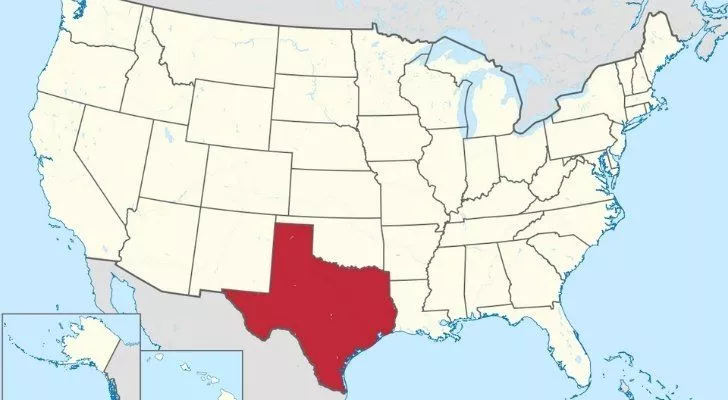
Texas is the second-largest US state, only losing out to Alaska.
The only European countries that come even close to the size of Texas are France, Germany, and maybe Spain.
Now that we’ve made Texas seem significant, it’s only fair to humble it because Texas could fit into Russia about 25 times.
Texas isn’t just an enormous state; its economy is larger than many countries!

We’ve already figured out that Texas is bigger than many places, but what’s more surprising is how it compares to other places around the world economically.
For example, Texas can fit into Australia some eleven times. Still, it has a larger GDP (that’s a gross domestic product, the way we measure the strength of an economy) than Australia!
Many European nations, such as Spain and Norway, have weaker overall economies than Texas.
The most surprising is the fact that Texas, with a population of 28 million people, has around the same size economy as Russia, which has some 144 million people!
Texas used to have embassies in London and Paris.
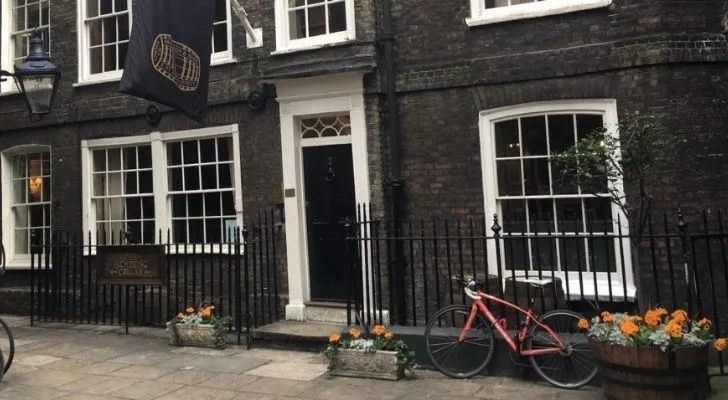
Of course, now that Texas is a state, it’s no longer for it to have an embassy, but as we know, Texas hasn’t always been a state.
For a very brief period from 1836 until 1845, the region was the Republic of Texas, a country of its own.
During this brief window, the government of the Republic of Texas sent representatives to London and Paris to gain European support for their new nation.
The embassies are long gone now, but a plaque still stands in London, where the republic’s embassy once was.
Most people think of Texas, the desert, the Wild West, and cowboys.
While this line of thought may have been more or less (definitely less) accurate at some point in time, it simply doesn’t do justice to this under-appreciated state.
That’s because most people think of Texas in terms of its most recent history.
What makes the region truly remarkable is the comprehensive history of the land, from the first inhabitants to Texans today.








